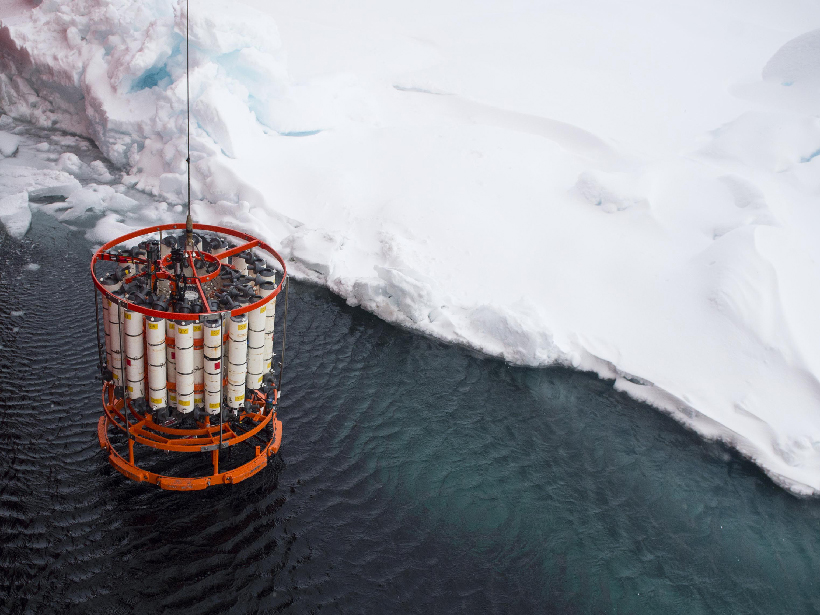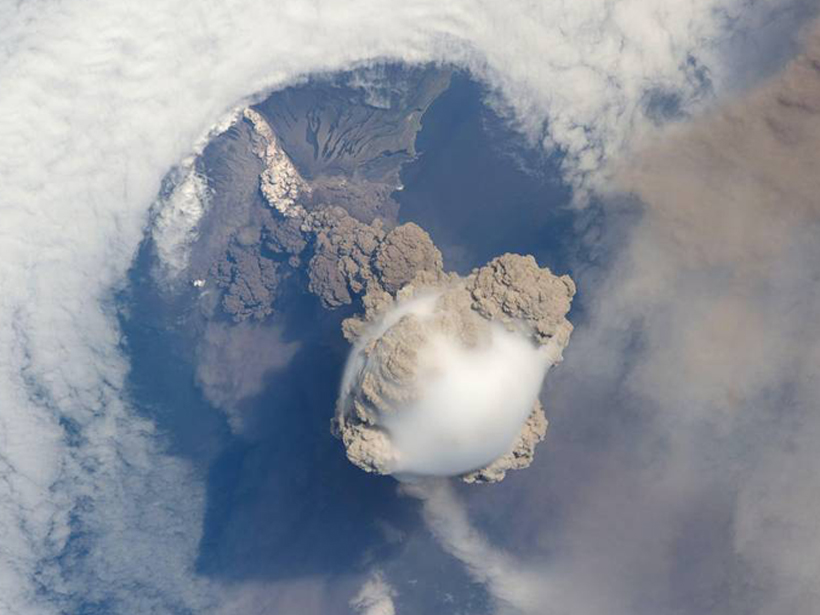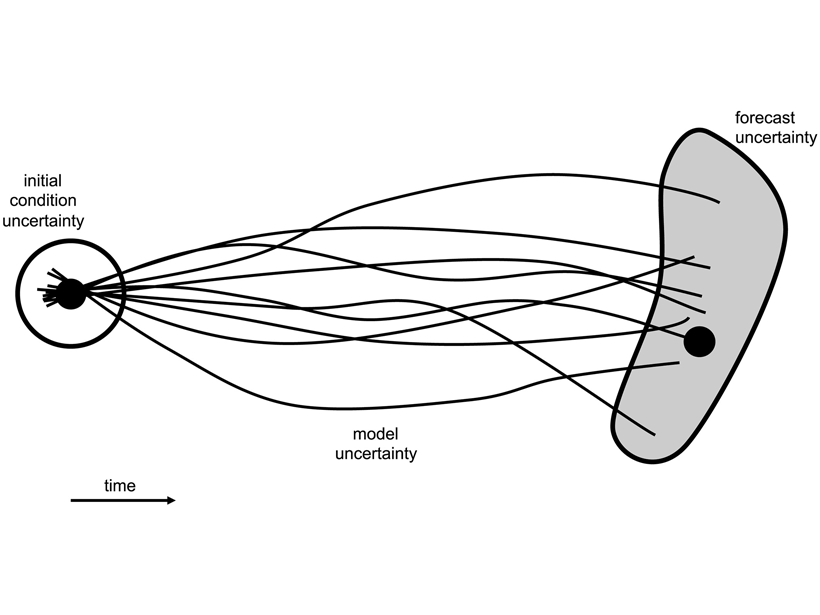Durante la expedición Pan-ártica, los investigadores obtuvieron y utilizaron datos de carbono y elementos traza para comprender mejor cómo el cambio climático afectará la producción primaria en una de las regiones de calentamiento más rápido del mundo.
CC BY-NC-ND 2020
Desert Microbes Mine for Water
Scientists studying a cyanobacterium isolated from rock samples in the Atacama Desert found out how the bacteria extract water to live. Their results may help identify likely sites for life on Mars.
Is Space Weather Worse by the Sea?
A new simulation of space-weather driven geoelectric fields at the land/sea conductivity boundary shows how these fields are magnified by both coastal effects and inhomogeneous land conductivity.
The Perils of Computing Too Much and Thinking Too Little
Big steps forward are synonymous with new ideas – a thought that merits mindfulness if we aspire to train students to do more than merely train machines.
Detecting Earth’s Natural Hazards High Up in the Sky
Signals in the ionosphere contain information about the source and scale of natural hazards occurring on Earth’s surface that could be used for monitoring and mitigation.
Evolution of the Asian Monsoon
Climate and topography change the characteristics of the Asian monsoon over millions of years. These changes affect the region’s climate and topography, and the cycle continues.
Does Drinking Water Salinity Affect Child Mortality?
An association between drinking water salinity and neonatal and infant mortality in Bangladesh indicates the critical role of water salinity on child health.
Reflecting on a Half Century of Mineral and Rock Physics at AGU
Research fields focused on the physical properties of Earth materials emerged in the 20th century and have been making major contributions within geoscience ever since.
Advancing Ensemble Methods in Space Weather Forecasting
A short, must-read, report for anyone developing new space weather forecasts.
Lifting the Veil on Martian Dust Storms
A special collection in JGR Planets presents insights from a long-awaited global dust storm on Mars in 2018 that was closely scrutinized by five orbiting and two landed spacecraft.










